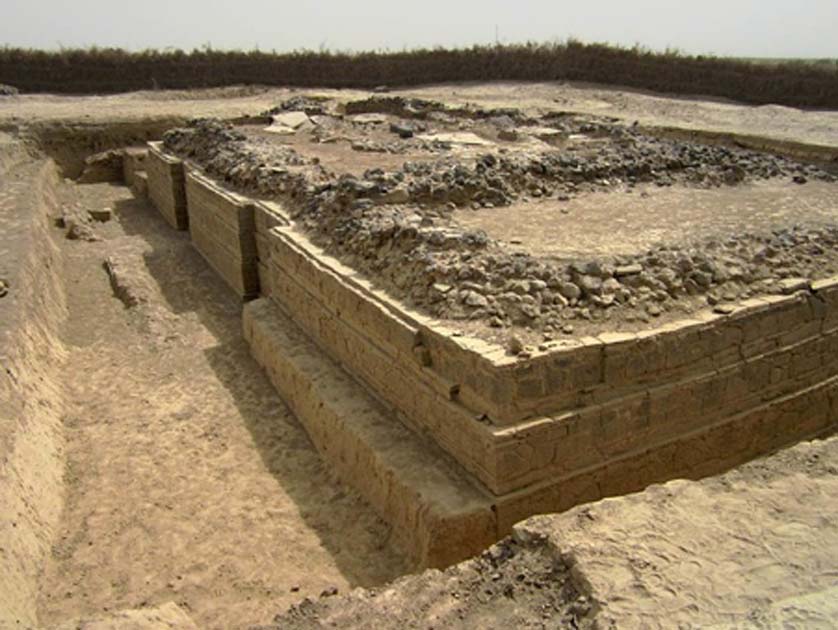Slave Trade and Exotic Animals Made the Ancient Port of Adulis Rich
The Red Sea coast has traditionally been one of the world’s great crossroads for trade and a meeting place of cultures. Because of this, there are many notable ports on this north-eastern coast of Africa. One of the most important of these was Adulis, which is now an important archaeological site. It has revealed many new insights about the region as well as international trade in the ancient world.
The History of Adulis, Eritrea
The date of the foundation of the port is not known. It is, however, believed to date from 1500 to 1200 BC as a port in the same area as Adulis is mentioned in the records of the 18 th Egyptian Dynasty. The Egyptians traded extensively with settlements and kingdoms on the Horn of Africa and based on archaeological finds, Adulis was regularly visited by Egyptian merchants.
The port was a transit point for ivory, slaves, and exotic animals from the interior of Africa. From Adulis they were shipped to Egyptian ports in return for luxury goods. After the establishment of the Ptolemaic Dynasty in Egypt (305 to 30 BC), the volume of trade between Adulis and Egyptian ports increased. Adulis is believed to have been part of the kingdom of D’mt at this time.
According to legend, the port was established by escaped Egyptian slaves. In reality, it was probably founded by local people from the Horn of Africa. One of the main exports of Adulis were war elephants and they were used by the Ptolemies in their many wars against the Seleucid dynasty - a dynasty which ruled over Syria and a large part of western Asia from 312 to 64 BC.

Ruin of old historic excavations at Adulis, Eritrea (homocosmicos/Adobe Stock)
During the Roman Empire, trade continued. The port became the main center of commerce for the powerful Axum Kingdom, whose heartland was in the Ethiopian Highlands. The Aksumite Kingdom traded ivory, slaves, tortoise shells, and hides with Roman merchants in return for iron, pottery, and luxury goods and the interactions between the Romans and the Aksumites led to the introduction of Christianity into this part of Africa.

The location of Adulis in Eritrea, Africa
Adulis prospered even after the fall of the Western Roman Empire by trading with the Byzantine Empire. However, in the 8 th century, the Aksumite Kingdom went into decline because of Muslim attacks and the port may have been taken by Arabs. Some claim that it played an important role in the introduction of Islam into the Horn of Africa. Adulis was eventually abandoned at an unknown date, possibly in the 9 th century.

Archaeological excavations at Adulis, done by the Italian Roberto Paribeni in 1907. (CC BY 2.0)
The Excavation of Adulis
The site was first excavated by British archaeologists who completed a survey of the site and found three large structures made from stone blocks, believed to have been a trio of temples. Another large building has since been identified by a German expedition as ‘the palace of Adulis’. Several other structures unearthed at the site, may have been public buildings and former private residences, although one of the stone ruins in the area surrounding the old port is thought to have been a mausoleum for the Adulis elite. Most of these ruins now consist only of low walls and foundations. Perhaps the best-known structure that remains at the port is that of a Byzantine style Christian Church.
- The Mythical Land of Punt – Will ‘God’s Land’ Ever Be Found?
- The Kingdom of Axum: Facts and Legends of a First Millennium Powerhouse
- Ten of Africa’s Most Powerful Kings, Queens, Warriors and Legends

Gupta art (on left) and gold coin found at the Adulis site (Photo by Madote)
Many impressive standing columns and red sandstone pillars still dot the site which suggest that at one time the port had many palaces and temples.
The small, yet busy, commercial port of ancient Adulis covers roughly one hectare and today the remains of this port are some 4 miles (7 km) from the sea. In the past, Adulis was closer to the coast and believed to be connected by a causeway to an island where merchant ships would unload their cargoes.
Travelling to Adulis
The archaeological site is 40 miles (62 km) from the city of Massawa and 72 miles from Asmara, the capital of Eritrea. There is plenty of accommodation near Adulis in Massawa and buses travel to the site. It is also possible to hire a car to take you to the old port.
Top image: A 5 thcentury Byzantine basilica at Adulis, Eritrea, excavated in 1914 Source: Stanley, D/CC BY 2.0
By Ed Whelan
References
Bowersock, G. W. (2013). The throne of Adulis: Red Sea wars on the eve of Islam. Oxford University Press
Munro-Hay, S. (1982). The foreign trade of the Aksumite port of Adulis. AZANIA: Journal of the British Institute in Eastern Africa, 17(1), 107-125
Available at: https://www.tandfonline.com/doi/abs/10.1080/00672708209511302
Zazzaro, C., Cocca, E., & Manzo, A. (2014). Towards a chronology of the Eritrean Red Sea port of Adulis (1st–early 7th century AD). Journal of African Archaeology, 12(1), 43-73
Available at: https://unora.unior.it/retrieve/handle/11574/40687/30433/Zazzaro_Manzo.pdf

















